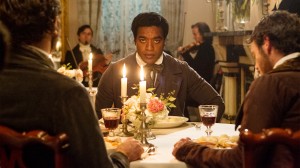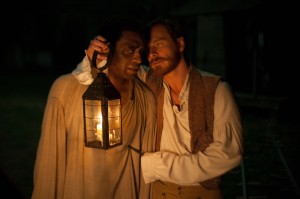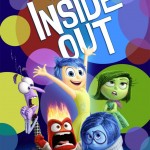 Next month marks the 20th anniversary of Schindler’s List. In July we reached the 15-year mark for Saving Private Ryan. Those two films stand out in my moviegoing memory as landmark “event films” about America — films that inspired what the news media likes to call “a national discussion” about important chapters in historical horror.
Next month marks the 20th anniversary of Schindler’s List. In July we reached the 15-year mark for Saving Private Ryan. Those two films stand out in my moviegoing memory as landmark “event films” about America — films that inspired what the news media likes to call “a national discussion” about important chapters in historical horror.
Both films were, in their own way, horror movies. But as painful as it was to watch them, the suffering that we experienced was not degrading or exploitative — it was humanizing. We were invited to remember a loss of catastrophic proportions, to grieve, and to mourn in a way that honored the lost, that exposed evil in a remedial way, and that educated new generations in important chapters of their inherited history. Such experiences enable us to live with greater compassion for others. They remind us of how easily human beings can be led into blindness and violence. Thus they challenge us to pay close attention to our own deeds and motivations. And they stand as monuments to the courageous, the conscientious, and the victims of hatred and cruelty.
Nevertheless, as with any manmade monument, viewers would do well to consider and discuss these works of art with critical discernment. Art is always, after all, the work of human beings and thus they have their strengths and their weaknesses.
Those two Steven Spielberg movies are among the most important films I’ve ever seen. But they were also somewhat frustrating — at least, that was my experience, and I have corresponded with many who share those frustrations. Does that mean that we who spotlight the weaknesses of those films are somehow insensitive about the Holocaust, or about the experiences of World War II veterans? Absolutely not. In fact, our attention to detail is motivated, in part, by a desire to see even greater films made on this subject.
 My experience with Steve McQueen’s new film 12 Years a Slave was similar. It immediately takes its place among the most harrowing moviegoing experiences of my life. And I applauded, with tears on my face, just like audiences did at the film festivals where it first played, grateful that America finally has a movie that bears witness to slavery from the point of view of a slave.
My experience with Steve McQueen’s new film 12 Years a Slave was similar. It immediately takes its place among the most harrowing moviegoing experiences of my life. And I applauded, with tears on my face, just like audiences did at the film festivals where it first played, grateful that America finally has a movie that bears witness to slavery from the point of view of a slave.
Others have asked the questions, and I echo them: How could such an essential work be so late in coming? And isn’t it a bit troubling that it took a British filmmaker to finally take up this text and bring it to the screen?
Regardless, it’s a film I would encourage every American over the age of 16 (in general) to see. It’s important. It’s necessary.
But it is also, in my opinion, limited and even undermined by certain aspects of McQueen’s artistry. Saying so, I run the risk of provoking an angry backlash. But I suspect that such rash comments will come from people who think I disrespect the subject, when nothing could be farther from the truth. I care so much about this subject that I hope to see even more powerful movies, songs, and stories about it.
12 Years a Slave is based on a manuscript of the same title, in which the testimony of a freed slave named Solomon Northup is recorded by David Wilson, chronicling Northup’s life. It follows Northup’s experience as a sophisticated, educated free man in New York; tells how he came to be sold into slavery; and reveals how he toiled and suffered under a variety of slave masters in Louisiana, from compassionate and respectful masters (who were, nevertheless, racists) to masters who would rape, beat, and even kill the people they called their “property.”
McQueen’s film sticks to that story in its script (by John Ridley) and in its period detail, which are both remarkable. We’re given eye-opening and awful exhibitions of slave markets, cotton plantations, the palatial homes of slave masters, and the squalor in which slaves were forced to survive. It’s as convincing and as educational as any big-screen treatment of the subject I’ve seen.
 But McQueen’s film is so preoccupied with the horrors of physical abuse — beatings, whippings, rape, humiliation, and hanging — that it seems as though he’s also interested in something more general than these historical events. It seems he’s interested in physical suffering itself as a subject.
But McQueen’s film is so preoccupied with the horrors of physical abuse — beatings, whippings, rape, humiliation, and hanging — that it seems as though he’s also interested in something more general than these historical events. It seems he’s interested in physical suffering itself as a subject.
This focus on bodily harm will come as no surprise to those familiar with McQueen’s career so far. He’s shown a keen interest in what we do to our own bodies and the bodies of others in order to get what we want.
His first film, Hunger, was about Irish hunger striker Bobby Sands. It was a difficult movie, full of questions about political conviction. Its centerpiece — a debate between a priest and the emaciated prisoner about his decision to express protest by harming himself — was one of the most intense and memorable conversations I’ve ever seen in a film. That movie launched actor Michael Fassbender into the forefront of big screen actors. And it received critical acclaim around the world.
Then came Shame, a film about a man obsessed — perhaps addicted to — sex. Fassbender starred again, this time portraying a slave to sexual impulses. One destructive — and self-destructive — rendezvous followed another. But this time, the film’s numerous and graphic scenes of sex and violence caused critics to question McQueen’s discernment. It’s one thing to film a thoughtful study of bad behavior — it’s another thing to fill the screen with so much explicit sex that it spoils any suspension of disbelief and prevents meaningful reflection on the subject. This movie seemed, to this moviegoer, extreme beyond any reason.
Now we get 12 Years a Slave. And right away, it feels like a McQueen movie.
We see a man and a woman, both black, both enslaved, both suffering. She turns to him, and immediately it’s clear that she is in a desperate state. An irrepressible longing draws them together for a scene of raw sexual consolation. It seems to be a deliberate transition from one movie to another: the “sex slavery” of the previous film shifts to a sex scene in a film about another kind of slavery entirely.
 We’ll come back to that scene again later in the film. For now, it serves to put a question in our minds: What brought these characters to this point? Who are they? Do they know each other? Why are they reaching out to one another in such desperation? Perhaps they need some release from despair, if only for a moment. Perhaps this is a compassionate exchange, a way to offer some joy — however complicated or costly — in the dark. What does it take, to drive a human being to this point? And what will he become, now that he has been reduced to this?
We’ll come back to that scene again later in the film. For now, it serves to put a question in our minds: What brought these characters to this point? Who are they? Do they know each other? Why are they reaching out to one another in such desperation? Perhaps they need some release from despair, if only for a moment. Perhaps this is a compassionate exchange, a way to offer some joy — however complicated or costly — in the dark. What does it take, to drive a human being to this point? And what will he become, now that he has been reduced to this?
Of the several wealthy white slave-owners in the film, Michael Fassbender plays the worst. And it’s a shame (no pun intended) that he’s allowed to dominate so much of the movie, because I suspect many moviegoers will come away thinking about him, and talking about him, more than any other character. That is, in part, because he’s the most outrageous presence on the screen. And it is, in part, because McQueen is clearly interested in Fassbender’s complex performance as a man clearly confused by his mind’s enslavement to hatred and prejudice. Once again, his body is a picture of beauty disintegrating under the influence of terrifying forces.
He’s not the only disturbing character. His wife, played by Sarah Paulson, is equally evil in her ferocious jealousy and icy manipulation. Paul Dano shows up playing yet another kind of monster, sneering and shrieking and spiteful. By contrast, Benedict Cumberbatch plays a plantation owner who seems almost like a saint, except when he can’t find a better compliment for Northup than “You are an exceptional n—–.”
What’s left for Chiewetel Ejiofor, in the lead role, is to suffer. To suffer nobly. To suffer dramatically. To suffer in blood and tears and spit.
Ejiofor’s performance is one for the ages. But I would have expected nothing less from him. He’s been one of my favorite actors since Stephen Frears’ excellent 2002 feature Dirty Pretty Things, and he made a memorable impression as a villain in Joss Whedon’s Serenity. Here, his best work is in his restraint. The script gives him numerous scenes in which other actors would have gone overboard with emotion for an Oscar. He makes Solomon Northup a man who struggles to contain storms of fear, horrors, and grief, in order to avoid breakdowns that would lead to irreversible consequences.
Then there is Lupita Nyong’o.
Some reviewers compared Sandra Bullock in Gravity to Maria Falconetti in The Passion of Joan of Arc. Apparently, if you film a woman in close-up during extreme suffering, you deserve comparison to that great film. I’ll try to avoid snarky responses to that. Suffice it to say that if you want to see a real, powerful, and appropriate allusion to Maria Falconetti’s performance in that classic film, see Lupita Nyong’o and tell me that she didn’t study Falconetti’s Joan. (Joan was, after all, looking heavenward in faith during persecution. By contrast, Gravity‘s Ryan Stone was just desperate to survive in outer space, with only a late-breaking impulse to consider prayer at all.) Nyong’o is asked to play scenes that will cause many moviegoers to avert their eyes. But she does so quietly, giving her character dignity even in moments of torture and abuse.
To some extent, the narrowness of McQueen’s focus is determined by his source material. But as Mel Gibson did with The Passion of the Christ, although to a lesser degree, he structures his film so that almost every situation works out like a mathematical equation the resolution of which is always some sickening outburst of physical abuse.
And yet, even though I find the emphasis on damaged flesh prioritized a bit too much in proportion to other aspects of the story, I’m relieved to say that McQueen is much more inclined toward poetic composition than Mel Gibson has ever been. Even his ugliest images invite us to see more than surface details. Just as the seemingly incidental nature shots are psalm-like in nature — including some drifting shots along a river that look like they were found on the cutting room floor of Terrence Malick’s The New World — so the close-ups of bodily injury take on an almost abstract quality, as if asking us to consider the impossibility of wiping the slate clean. A shot of a steamboat’s waterwheel and the turbulent wake behind it seems to suggest that our history will experience the troubling consequences of this violence for generations.
With all of this visual richness, I find it hard to voice my frustrations without feeling like I’m sitting in church and criticizing the decorations. But I do hope this will someday inspire an even better, more ambitious, more informative movie on the subject — one that requires more audience participation, rather than what amounts primarily here to audience reaction.
I remember feeling this — albeit much more intensely — as I watched The Passion of the Christ: I want to witness much more than just the horror of brutality. I want to understand the context of it. I want to think about where such cruelty and hatred — and where such hope and resilience — come from. That way, I’m left with something more than sympathy for the bleeding victims, and more than anger toward the villains. I might be left with an understanding of the capacity that I have to contribute to that kind of suffering. I might be left with a better understanding of how to find hope in the middle of persecution.
I would like to have seen more consideration of the religious beliefs represented in the songs we (only occasionally) hear the slaves sing. One scene here — in which Northup slowly surrenders to the power of gospel music — is particularly interesting, because we hear the language of scripture employed in sharp contrast to the satanic exploitation of the Bible by the power-mad slavemaster. But it feels like one step forward into a question the film fails to explore substantially.
I also wish McQueen he had given more attention to the relationships between the slaves. That opening scene of a heartbreaking and humbling sexual surrender seems like a scene from a movie that explores that more fully. I also would have liked to learn more about the context of all this suffering — the business of plantations, the efforts (if there were any) to track down free and respected African Americans who went missing.
And I do wish the soundtrack, simple as it is, didn’t sound so much like a chord progression from a Moby album.
Still, despite my mild aggravation, the film is much more than the sum of its parts. It’s a powerful, exhausting, and valuable viewing experience. The lingering effect of this movie is, “Yeah, these nightmares really happened. People can be horrible. God have mercy.” I just don’t find that the movie has given me much to think about, or much reason to revisit it…
…unless it’s to admire Alfre Woodard some more.
Did I mention Alfre Woodard yet?
I didn’t realize just how much I’ve missed her, this queen among actresses, until her one big scene here — as a slave who has gained respect, sophistication, and some measure of freedom in the Southern caste society. Man, Woodard can steal a whole movie with one complicated glance and a teacup in her hand.
As I exited the theater, and the moviegoers all around me were talking about how they would’ve “just lost it” and “fought back and killed that evil bastard” — I’m not kidding; I heard that several times — I admit with some embarrassment, dear reader, that I was already thinking back to Alfre Woodard’s scene, and how I really should revisit her extraordinary presence in John Sayles’ movie Passion Fish again.
•
Other Reviews I Recommend:
Is being unflinchingly graphic (and I’d argue McQueen hedges himself, even in several of the celebrated long takes) enough to say that you’ve challenged your audience? Imagination is still required to portray the worst aspects of mankind—you can show the actions full detail, but the real artist also confronts you with the nooks and crannies of the psyche that would inflict such beatings, such unspeakable physical and mental torture. This has never been McQueen’s strong suit; at least as far as his movies go, he’s an outside-in kind of guy. And there’s usually not much ‘in’ there.
This makes the few truly complicated moments of the picture stand out all the more.
It must be noted that, in one important way, the film does pose an affront to viewer expectations: In a story of injustice, audiences today expect some kind of satisfaction. There must be justice or, better, revenge. Take Quentin Tarantino’s lurid blaxploitation-themed Django Unchained, a film that is, in a sense, remarkably frank (by Hollywood standards) about the ugliness of slavery — but in the context of a wildly unrealistic, hyperviolent revenge story, not unlike his alternate-reality WWII film Inglourious Basterds.
12 Years makes no concession to the viewer’s wish for satisfaction or closure. It’s true that Northup is never wholly humbled and, following the source material, refuses to take a beating lying down if he has another choice. But the consequences of his insubordination are so heinous that there’s no satisfaction in it.
Hollywood formula almost demands, in a climactic confrontation, that Northup indulge in one brief moment of victory over a longtime oppressor: a look of triumph, a parting taunt, a sock in the jaw, something. (Even the real Northup confides in his memoir, “It would have been a comfort had I dared to give him a parting kick.”) The film denies the viewer this comfort, which would trivialize the atrocities Northup has suffered.












